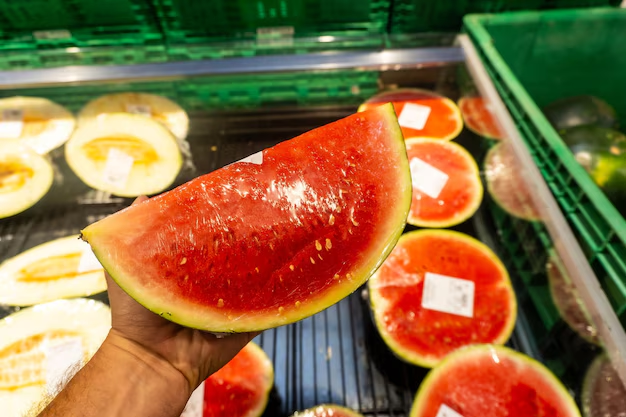Why Storing Grapefruit in the Refrigerator Could Be a Game Changer for Your Kitchen
Have you ever opened your fruit basket, only to find your grapefruit looking shriveled and less-than-appealing? You're not alone—many people wonder about the best way to store grapefruit. One popular question is whether refrigerating grapefruit can extend its shelf life. In this guide, we'll delve into the ins and outs of grapefruit storage, explore related subtopics, and leave you equipped with practical, expert insights.
🌿 The Basics of Grapefruit: More Than Just a Citrus Fruit
Grapefruit isn't just another fruit—it's a staple for many health enthusiasts, often praised for its tangy flavor and high nutritional content. This citrus fruit is a rich source of vitamin C, fiber, and antioxidants, making it a popular choice for breakfast, snacks, or even as part of a balanced diet.
Key Characteristics of Grapefruit:
- Varieties: There are different types of grapefruit, such as pink, white, and red, each with its own unique flavor profile.
- Texture and Flavor: Known for their tartness, grapefruits also have a slightly sweet undertone, making them versatile for both raw consumption and culinary applications.
🌬️ Fresh or Frozen? The Best Way to Store Grapefruit
The storage of grapefruit largely depends on how soon you plan to consume it. Each method—whether at room temperature or refrigerated—has its pros and cons.
Room Temperature Storage
Storing grapefruit at room temperature is convenient if you aim to eat it within a week. This context allows the fruit to remain juicy and aromatic.
Pros:
- Aroma: Allows the grapefruit to retain its fresh fragrance.
- Convenience: No need for extra space in the refrigerator.
Cons:
- Shelf Life: Tends to have a shorter shelf life than when refrigerated.
- Risk of Dehydration: Might become dry and wrinkled if left too long.
Refrigerated Storage
Refrigerating grapefruit can significantly extend its freshness, especially if you purchase in bulk and plan on a longer consumption period.
Pros:
- Extended Freshness: Keeps the fruit fresh for up to several weeks.
- Reduces Spoilage: Cooler temperatures slow down the ripening and spoiling processes.
Cons:
- Flavor Change: Some people might notice a slight change in flavor and texture.
- Storage Space: Takes up space that might be needed for other perishables.
🧊 Taking Grapefruit Storage to the Next Level: Key Considerations
When deciding on the best storage method for your grapefruit, consider the following factors:
Climate and Environment
Your local climate affects how quickly fruits ripen and spoil. In warmer areas, refrigeration can prevent grapefruit from rapidly overripening, while temperate zones might allow for room temperature storage.
Household Consumption Rates
For families or individuals who consume grapefruit regularly, keeping a rotating supply at room temperature might be sufficient. Conversely, if you eat grapefruit sporadically, refrigeration is likely the best option to prevent waste.
Space Constraints
Consider your kitchen setup. If space is limited, assess whether your refrigerator can accommodate grapefruit storage without affecting other essentials.
🍽️ Practical Tips for Freshness and Flavor
To maximize the freshness and flavor of your grapefruit, consider these practical storage tips:
- Invest in A Crisper Drawer: Use your fridge's crisper drawer to regulate humidity and extend shelf life.
- Avoid Water: Ensure the grapefruit is dry before storing; moisture can accelerate spoilage.
- Balanced Storage: Place grapefruits in a single layer in the fridge to prevent bruising and pressure points.
🍊 Summary: Storage Tips and Best Practices
Here's a concise list of tips to keep in mind for optimal grapefruit storage:
- 🧺 Short-Term Use: Store at room temperature if you plan to consume within a week.
- 🧊 Long-Term Use: Refrigerate to extend freshness and reduce spoilage.
- 🌀 Climate Considerations: Adjust storage methods according to your local climate.
- 🔬 Space Adaptation: Evaluate your kitchen space for the right storage choice.
[Insert Visual Table Here]
🥗 Beyond Storage: Creative Uses for Grapefruit
While we’ve discussed the best ways to store grapefruit, let's not forget the endless culinary possibilities this fruit offers. Here are some delightful ways to incorporate grapefruit into your meals:
Grapefruit in Salads
Add grapefruit segments to salads to introduce a zesty twist that balances savory and sweet flavors beautifully. Pair it with greens and avocado for a refreshing dish.
Grapefruit As a Beverage
Grapefruit makes an excellent base for juices and cocktails. It can also be infused in water for a citrusy, refreshing drink.
Culinary Adventures
Grapefruit can be caramelized and served as a dessert or paired with meats like fish and chicken, creating a savory-sweet contrast that’s hard to resist.
🌟 Wrapping Up
Deciding whether to store grapefruit in the refrigerator hinges on personal preferences and logistical considerations. Both room temperature and refrigerated storage offer distinct advantages and downsides, ultimately depending on how quickly you plan to consume your grapefruit. By understanding these options, you can make informed decisions that ensure your citrus experience remains vibrant and flavorful. Your choice can enhance not only the shelf life but also the taste and culinary versatility of this beloved fruit. Enjoy your grapefruits to the fullest, both in taste and longevity!
